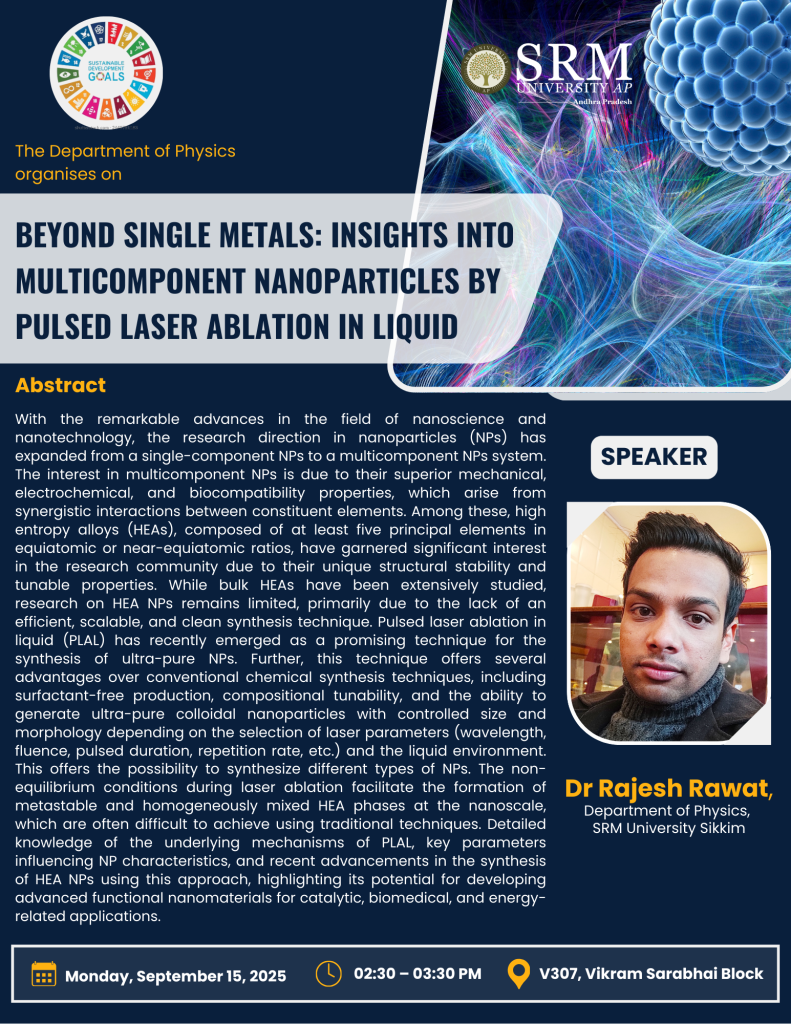- This event has passed.
Research Seminar on Multicomponent Nanoparticles by Pulsed Laser Ablation in Liquid
September 15 @ 2:30 pm - 3:30 pm

The Department of Physics is organising a research seminar on “Beyond Single Metals: Insights into Multicomponent Nanoparticles by Pulsed Laser Ablation in Liquid” on September 15, 2025. Dr Rajesh Rawat, Department of Physics, SRM University Sikkim, will deliver the seminar.
Abstract
With the remarkable advances in the field of nanoscience and nanotechnology, the research direction in nanoparticles (NPs) has expanded from a single-component NPs to a multicomponent NPs system. The interest in multicomponent NPs is due to their superior mechanical, electrochemical, and biocompatibility properties, which arise from synergistic interactions between constituent elements. Among these, high entropy alloys (HEAs), composed of at least five principal elements in equiatomic or near-equiatomic ratios, have garnered significant interest in the research community due to their unique structural stability and tunable properties. While bulk HEAs have been extensively studied, research on HEA NPs remains limited, primarily due to the lack of an efficient, scalable, and clean synthesis technique. Pulsed laser ablation in liquid (PLAL) has recently emerged as a promising technique for the synthesis of ultra-pure NPs. Further, this technique offers several advantages over conventional chemical synthesis techniques, including surfactant-free production, compositional tunability, and the ability to generate ultra-pure colloidal nanoparticles with controlled size and morphology depending on the selection of laser parameters (wavelength, fluence, pulsed duration, repetition rate, etc.) and the liquid environment. This offers the possibility to synthesize different types of NPs. The non-equilibrium conditions during laser ablation facilitate the formation of metastable and homogeneously mixed HEA phases at the nanoscale, which are often difficult to achieve using traditional techniques. Detailed knowledge of the underlying mechanisms of PLAL, key parameters influencing NP characteristics, and recent advancements in the synthesis of HEA NPs using this approach, highlighting its potential for developing advanced functional nanomaterials for catalytic, biomedical, and energy-related applications.
Take part in this insightful session!

